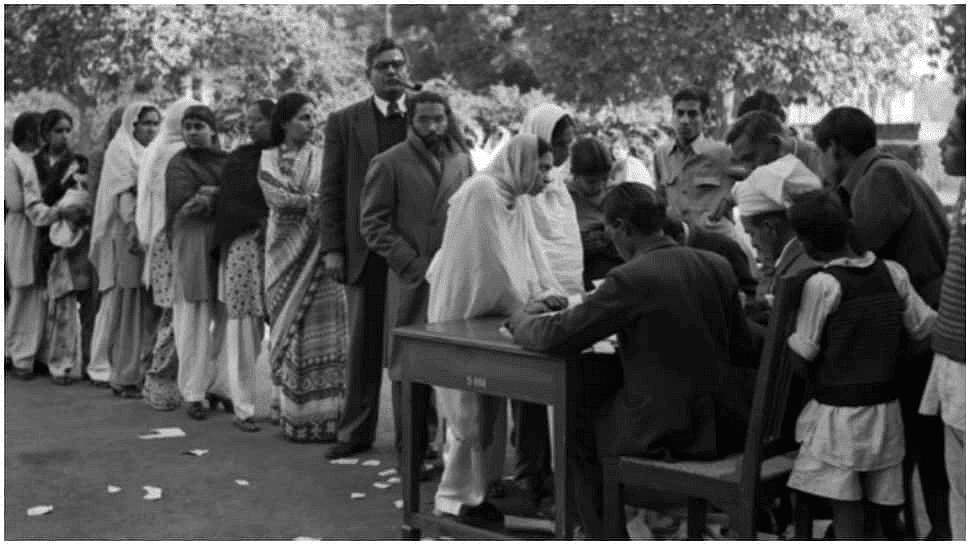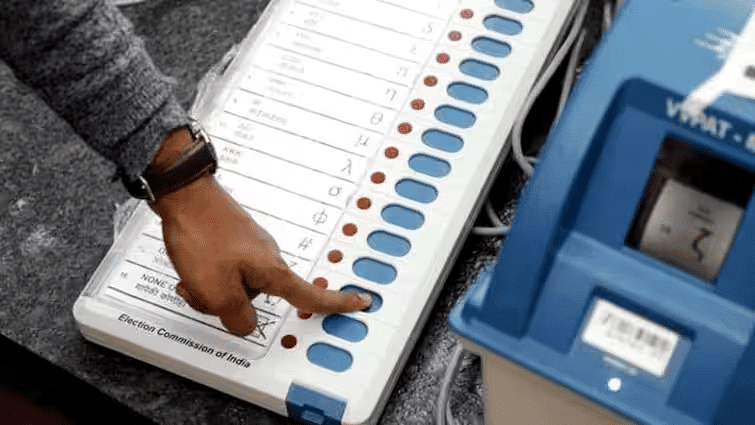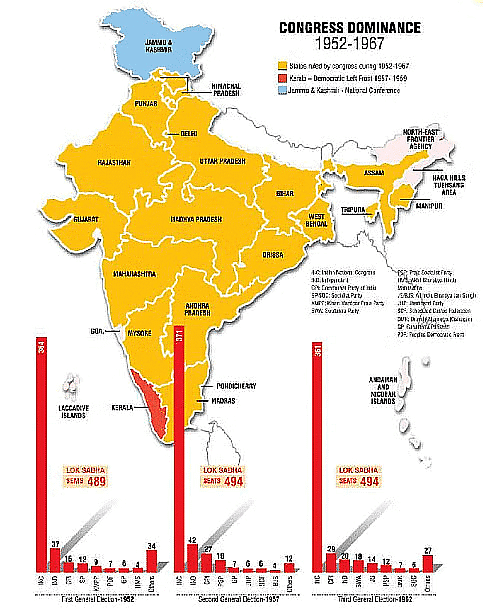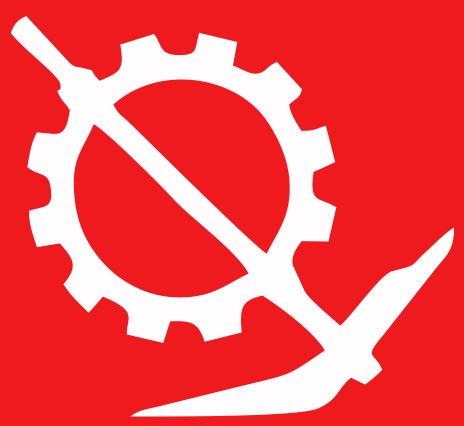Era of One Party Dominance Class 12 Political Science
Challenge of Building Democracy
- Upon gaining independence, India faced significant challenges in establishing democracy.
- In contrast to many other nations that opted for non-democratic governance due to concerns about national unity, India chose a democratic path.
- Non-democratic regimes often promised to restore democracy but entrenched themselves once in power.
- Indian leaders, grounded in the freedom struggle's democratic ideals, recognized the essential role of politics in problem-solving within a democracy.
Adoption of the Constitution:
- India's Constitution was adopted on 26 November 1949 and came into effect on 26 January 1950.

- Despite initial expectations of a swift transition to democratically elected governance, challenges arose in organizing the first general elections.
- The Election Commission faced immense tasks like delimiting constituencies and compiling voter rolls, especially ensuring women's proper inclusion.
- The monumental effort involved training hundreds of thousands of officers and polling staff for the unprecedented election.
Landmark 1952 Elections
- The first general election of 1952 marked a significant milestone in India's democratic journey.
 India’s first general election, 1952
India’s first general election, 1952
- This election, termed as the 1952 election, displayed the success of universal adult franchise in a diverse, largely illiterate population.
- The election process, though challenging and requiring postponements, demonstrated the strength of Indian democracy.
- Observers both within and outside India lauded the election as a testament to the viability of democracy in diverse socio-economic conditions.
Changing Methods of Voting
- In the early days, during the first general election, a traditional method of voting was employed. Each polling booth contained individual boxes for candidates with their election symbols. Voters received a blank ballot paper which they had to deposit into the box of their chosen candidate. This system utilized approximately 20 lakh steel boxes for the process.
- The complexity of ballot box preparation during this period was significant. Each box had to display the candidate's symbol inside and outside, along with the candidate's name in Urdu, Hindi, and Punjabi, alongside constituency and polling station details. The ballot paper seal, signed by the presiding officer, needed to be inserted and secured within the box.
- The transition to a simpler method occurred after the first two elections, where ballot papers included candidate names and symbols. Voters were required to stamp their choice of candidate. This system remained in use for around forty years until the late 1990s.
- The adoption of Electronic Voting Machines (EVMs) began with the Election Commission's initiative in the late 1990s. By 2004, the entire country had shifted to using EVMs, marking a significant and more efficient evolution in the voting process.
 Electronic Voting Machines (EVM)
Electronic Voting Machines (EVM)
Congress Dominance in the First Three General Elections
- The Indian National Congress emerged victorious in the first general election, as expected due to its historical legacy from the national movement.
- With a widespread organizational structure and Jawaharlal Nehru's charismatic leadership, the party secured a significant win, capturing 364 out of 489 Lok Sabha seats.
- Even in state elections concurrent with the Lok Sabha polls, the Congress triumphed across most states, forming governments in all except a few.
- Jawaharlal Nehru naturally assumed the role of Prime Minister following the first general election, solidifying Congress's national leadership.
- Subsequent elections in 1957 and 1962 maintained Congress's dominance, with the party securing three-fourths of Lok Sabha seats in each election, far surpassing rival parties.

- Although there were instances like the 1957 Kerala election where a CPI-led coalition took power, Congress largely controlled both national and state governments.
- The electoral system at the time favored Congress significantly, allowing the party to win a disproportionate number of seats with less than half of the total votes cast.
- This outcome was largely due to the first-past-the-post electoral method in India, where the winner takes more seats than their proportional vote share, benefiting the Congress.
Communist Victory in Kerala
- By 1957, the Congress party faced defeat in Kerala.
- In the March 1957 assembly elections, the Communist Party secured the majority in the Kerala legislature, winning 60 out of 126 seats with support from five independents.
- E. M. S. Namboodiripad, the Communist legislature party leader, was invited by the governor to form the ministry, marking the first instance worldwide of a Communist party government gaining power through democratic elections.
Congress response:
- Following their loss, the Congress party initiated a 'liberation struggle' against the Communist-led government.
- The CPI government had promised radical and progressive policy actions, accusing the agitation against them of being fueled by vested interests and religious groups.
Congress intervention:
- In 1959, the Congress government at the Centre used Article 356 of the Constitution to dismiss the Communist government in Kerala.
- This move sparked controversy and was widely criticized as a notable example of the misuse of constitutional emergency powers.
Socialist Party
- The Socialist Party's roots can be traced back to the mass movement phase of the Indian National Congress during the pre-independence era.
- In 1934, a faction of young leaders within the Congress formed the Congress Socialist Party (CSP) with a vision for a more radical and egalitarian Congress.
- In 1948, the Congress amended its constitution to prohibit dual party membership, leading the Socialists to establish a separate Socialist Party.
- Despite having a presence in various Indian states, the Socialist Party faced electoral setbacks and only achieved success in specific regions.
 Socialist Party
Socialist Party
- The Socialists espoused democratic socialism, distinguishing themselves from both the Congress and the Communists, criticizing the former for its pro-capitalist and pro-landlord stance.
- A dilemma arose for the Socialists in 1955 when the Congress embraced the goal of a socialist society, making it challenging for the Socialists to position themselves as a distinct alternative.
- Internal divisions emerged within the Socialist Party, with some leaders like Rammanohar Lohia distancing themselves from the Congress, while others such as Asoka Mehta advocated for limited cooperation.
- Subsequent splits and reunions within the Socialist Party gave rise to various socialist factions, including the Kisan Mazdoor Praja Party, Praja Socialist Party, and Samyukta Socialist Party.
- Prominent leaders of the socialist movement included Jayaprakash Narayan, Achyut Patwardhan, Asoka Mehta, Acharya Narendra Dev, Rammanohar Lohia, and S.M. Joshi.
- Several present-day Indian political parties like the Samajwadi Party, Rashtriya Janata Dal, Janata Dal (United), and Janata Dal (Secular) trace their lineage back to the Socialist Party.
Nature of Congress Dominance
- Many countries have experienced one-party dominance, but India's case is unique.
- In other instances globally, one-party dominance often entails compromises on democracy.
- Countries like China, Cuba, and Syria legally allow only one party to govern, while others like Myanmar, Belarus, Egypt, and Eritrea effectively function as one-party states due to legal and military measures.
- Previously, Mexico, South Korea, and Taiwan were also predominantly one-party systems.
- What sets India's Congress party dominance apart is that it occurred within a democratic framework.
- Unlike other cases, where one party's rule is enforced undemocratically, the Congress party in India won elections through free and fair processes.
- This situation is akin to the African National Congress's enduring dominance in South Africa post-apartheid.
Historical Roots of Congress Dominance
- The Congress party's exceptional success can be traced back to its connection with the freedom struggle.
- Viewed as the inheritor of the national movement, many prominent freedom fighters transitioned into Congress leaders and contested elections under its banner.
- By the time of independence, the Congress was already a well-established and organized political entity.
- While other parties were just forming strategies, the Congress had begun its electoral campaigns.
- Several political parties emerged around or after independence, giving the Congress an early advantage.
- By the time of independence, the Congress had a widespread organizational network extending to grassroots levels.
- Due to its historical role as a national movement, the Congress party was all-encompassing and enjoyed broad support.
- These factors collectively contributed to the sustained dominance of the Congress party in India.
Congress as Social and Ideological Coalition
- Congress evolved from a pressure group in 1885 to a mass movement in the 20th century, leading to its transformation into a dominant political party within the Indian political system.
- Initially, Congress was led by the English-speaking, upper caste, upper middle-class urban elite, but its social base expanded with civil disobedience movements, encompassing a diverse range of groups with sometimes conflicting interests.
- Peasants, industrialists, urban and rural dwellers, workers, owners, and individuals from middle, lower, and upper classes and castes found representation within Congress over time.
- The leadership of Congress also diversified from upper caste professionals to include agriculture-based leaders with rural backgrounds by the time of independence.
- By independence, Congress had evolved into a social coalition representing India's diversity in terms of classes, castes, religions, languages, and various interests, with different groups either merging their identities within Congress or maintaining distinct identities.
- Congress served as an ideological coalition accommodating a wide spectrum of ideologies ranging from revolutionary to pacifist, conservative to radical, extremist to moderate, and spanning the political spectrum from right to left and everything in between.
- It acted as a platform for various groups, interests, and even political parties to participate in the national movement, allowing organizations and parties with their own constitutions and structures to coexist within Congress.
- Despite differences in methods, specific programs, and policies, Congress managed to handle and sometimes resolve disagreements to build consensus, although some factions like the Congress Socialist Party eventually separated and became opposition parties.
The Communist Party of India
 The Communist Party of India
The Communist Party of India
- Communist groups emerged in the early 1920s across India, inspired by the Bolshevik revolution in Russia, advocating socialism as a solution to the nation's issues.
- Starting from 1935, Communists primarily operated within the Indian National Congress, but a split occurred in December 1941 when they chose to support the British against Nazi Germany.
- At independence, differing opinions arose within the CPI regarding the true nature of Indian independence, questioning whether it was genuine or superficial.
- Shortly after independence in 1947, the CPI believed that the power transfer was not true freedom, leading them to endorse violent uprisings in Telangana, which were suppressed by the military.
- In 1951, the CPI shifted away from violent revolution, opting to participate in the upcoming general elections, where they won 16 seats and became the largest opposition party.
- The CPI enjoyed significant support in states like Andhra Pradesh, West Bengal, Bihar, and Kerala.
- Notable leaders of the CPI included A. K. Gopalan, S.A. Dange, E.M.S. Namboodiripad, P.C. Joshi, Ajay Ghosh, and P. Sundarraya.
- A major split occurred in 1964 within the party due to ideological differences between the Soviet Union and China, leading to the formation of the CPI(M).
- While the CPI aligned with the Soviet Union, the CPI(M) emerged as a separate entity. Both parties continue to exist today.
Tolerance and Management of Factions in Congress
Coalition-like Character:
- A coalition accommodates all members, avoiding extreme positions and emphasizing balance on various issues.
- Compromise and inclusiveness are key traits of a coalition, making it challenging for the opposition to counter.
Tolerance of Internal Differences:
- In a party operating as a coalition, there is greater tolerance for internal differences and accommodation of various groups' ambitions.
- The Congress exhibited tolerance during the freedom struggle and post-Independence, retaining dissatisfied groups within rather than becoming opposition.
Internal Factions:
- Groups within the party, known as factions, were encouraged due to the coalitional nature of the Congress.
- These factions, rooted in ideological or personal factors, strengthened the Congress by keeping diverse interests within the party.
Impact on Political Landscape:
- State units of the Congress comprised multiple factions, projecting the party as a broad centrist entity.
- Other parties influenced policy indirectly by engaging with these factions, exerting pressure on the ruling Congress.
- The system of factions acted as a balancing mechanism within the Congress, fostering political competition within the party.
Congress System:
- During the early years of electoral competition, the Congress functioned both as the ruling party and the opposition, leading to the term 'Congress system' in Indian politics.
Bharatiya Jana Sangh (BJS)
- The Bharatiya Jana Sangh was established in 1951 with Shyama Prasad Mukherjee as its founding President.
- Its origins can be linked to the Rashtriya Swayamsevak Sangh (RSS) and the Hindu Mahasabha before independence.

- Distinguished by its ideology and programs, the Jana Sangh promoted the concept of one country, one culture, and one nation. It believed that India could achieve modernity, progress, and strength by embracing Indian culture and traditions.
- The party advocated for the reunification of India and Pakistan in Akhand Bharat.
- It spearheaded movements such as the push to replace English with Hindi as India's official language and opposed making concessions to religious and cultural minorities.
- Especially following China's nuclear tests in 1964, the party consistently supported India's development of nuclear weapons.
- In the 1950s, the Jana Sangh had limited electoral success, securing only 3 Lok Sabha seats in the 1952 elections and 4 seats in the 1957 general elections.
- Initially, its support primarily came from urban areas in Hindi-speaking states like Rajasthan, Madhya Pradesh, Delhi, and Uttar Pradesh.
- Prominent leaders of the party included Shyama Prasad Mukherjee, Deendayal Upadhyaya, and Balraj Madhok.
- The Bharatiya Janata Party (BJP) can be traced back to the Bharatiya Jana Sangh.
Emergence of Opposition Parties
- Factions were perceived as a problem to be solved, but the viewpoint shifted to acknowledging factions as normal and beneficial.
- India had opposition parties even in historical periods. The country boasted a wider array of diverse opposition parties than many other multi-party democracies.
- Several opposition parties predated India's first general election in 1952 and significantly influenced the political landscape in the 1960s and 1970s.
- Most present-day non-Congress parties can trace their origins back to the opposition parties of the 1950s.
- Despite limited representation in the Lok Sabha and state assemblies, these opposition parties played a critical role in upholding the democratic nature of the system.
- They consistently provided principled critiques of Congress party policies, serving as a check on the ruling party and occasionally altering power dynamics within the Congress.
- By sustaining democratic alternatives, these parties prevented anti-democratic sentiments from taking root, nurturing leaders pivotal to the nation's development.
- Initially, there was substantial mutual respect between Congress leaders and those from the opposition, fostering a collaborative political environment.
- The early governance included opposition figures like Dr. Ambedkar and Shyama Prasad Mukherjee in the cabinet, showcasing a spirit of inclusivity and cooperation.
- Jawaharlal Nehru's administration welcomed leaders from different ideological backgrounds, although such camaraderie dwindled with escalating party competition.
- India's initial democratic phase was distinctive due to the Congress's inclusive approach during the freedom movement, attracting diverse segments and interests.
- The Congress's ability to incorporate various factions initially granted it an advantage, but as this inclusivity waned, other parties gained prominence.
|
36 videos|431 docs|77 tests
|
FAQs on Era of One Party Dominance Class 12 Political Science
| 1. What is One Party Dominance? |  |
| 2. What were the challenges faced in building democracy during the era of One Party Dominance? |  |
| 3. How did Congress dominate the first three general elections in India? |  |
| 4. What was the nature of Congress dominance during the era of One Party Dominance? |  |
| 5. How did opposition parties emerge and grow during the era of One Party Dominance? |  |






















